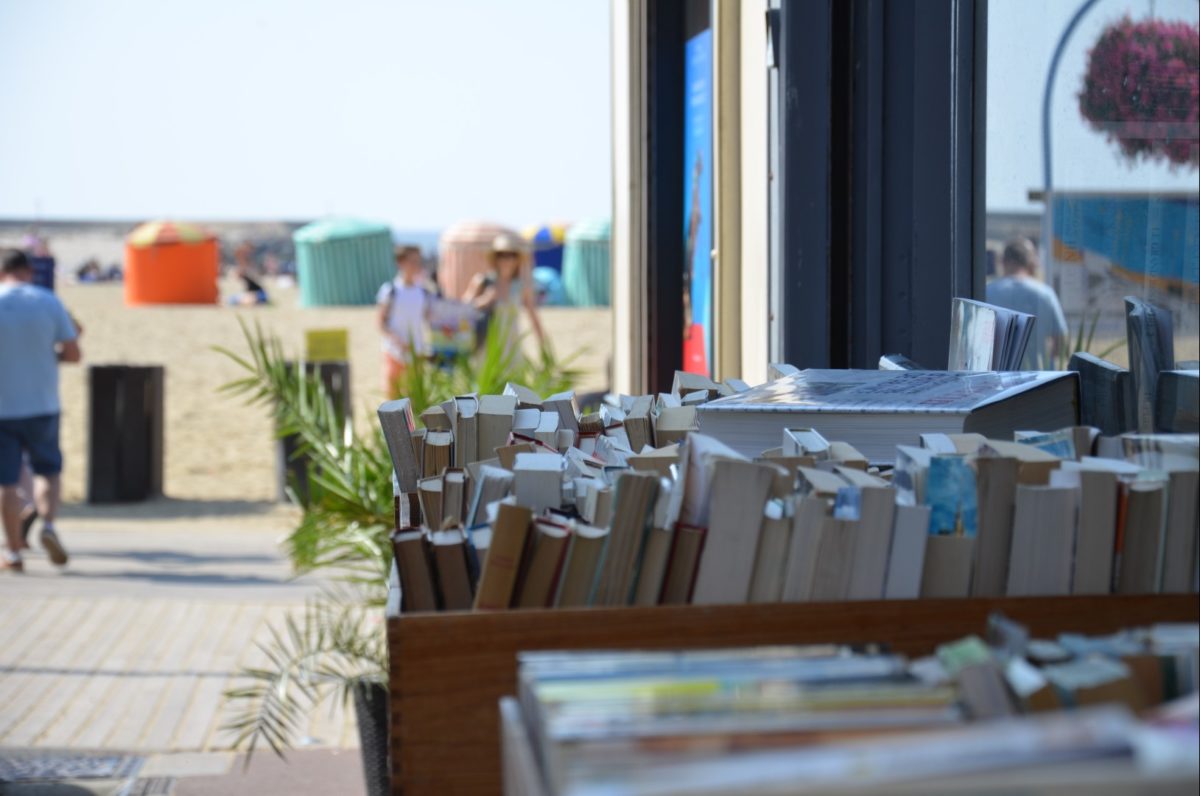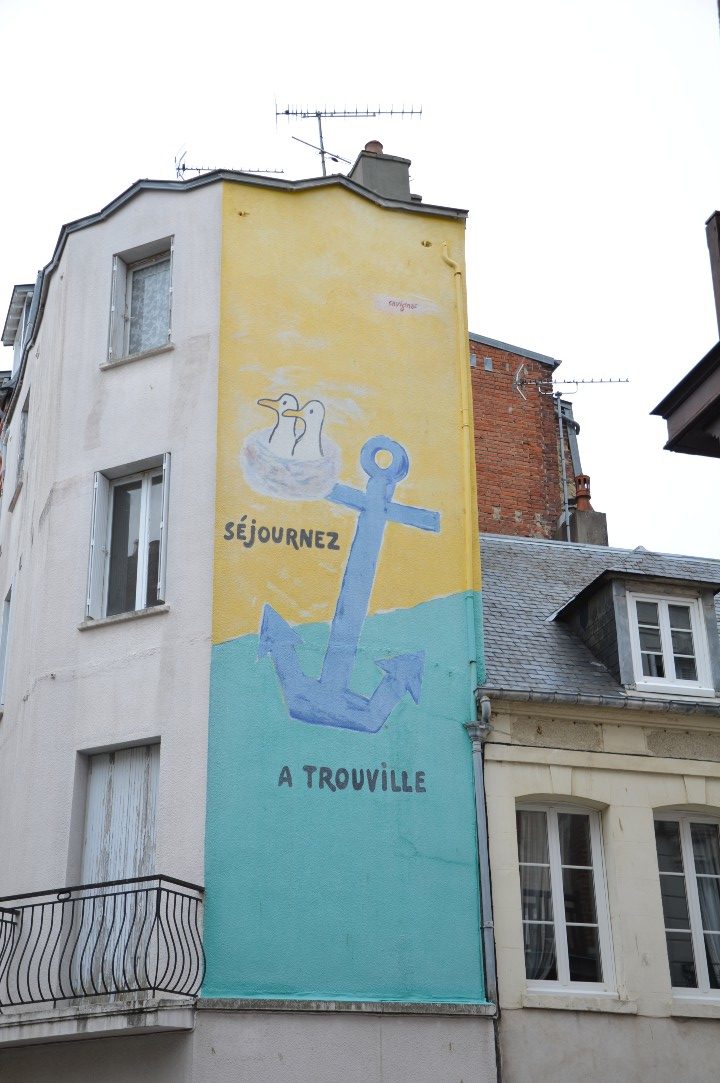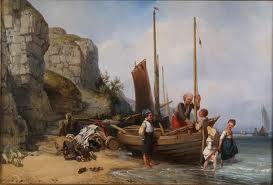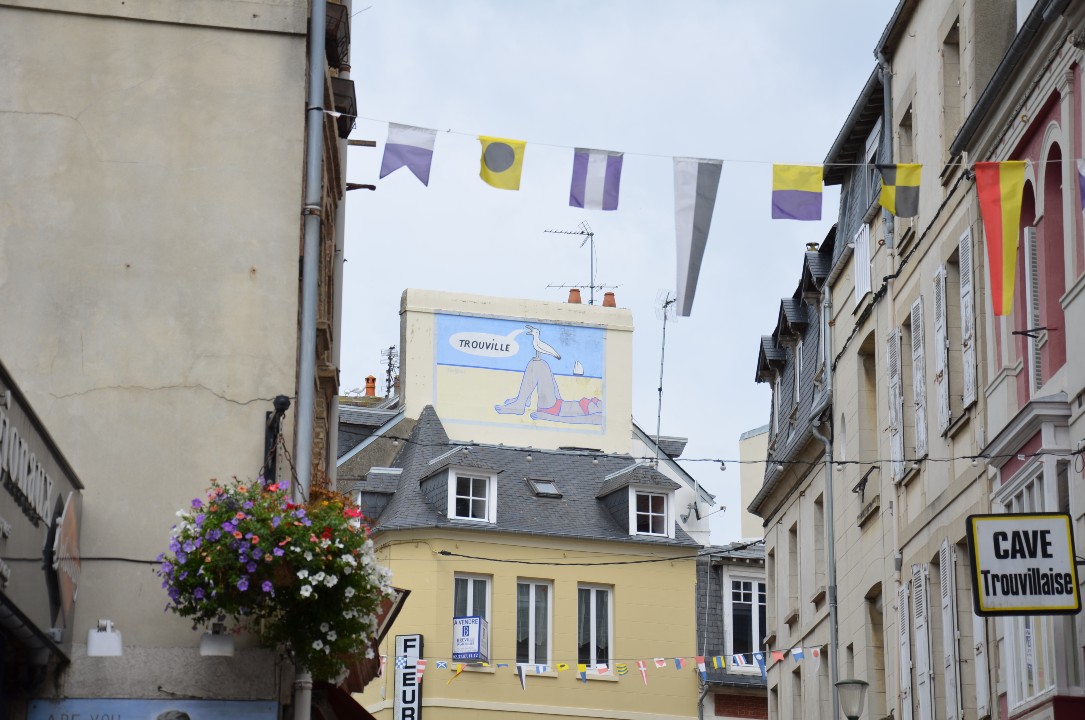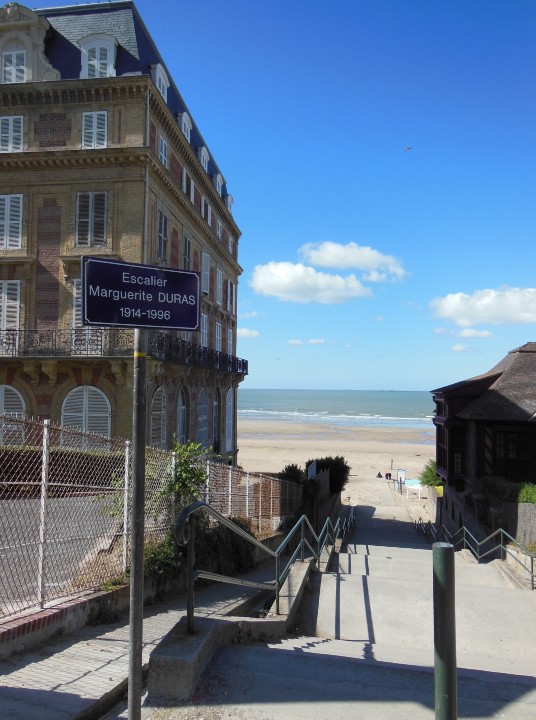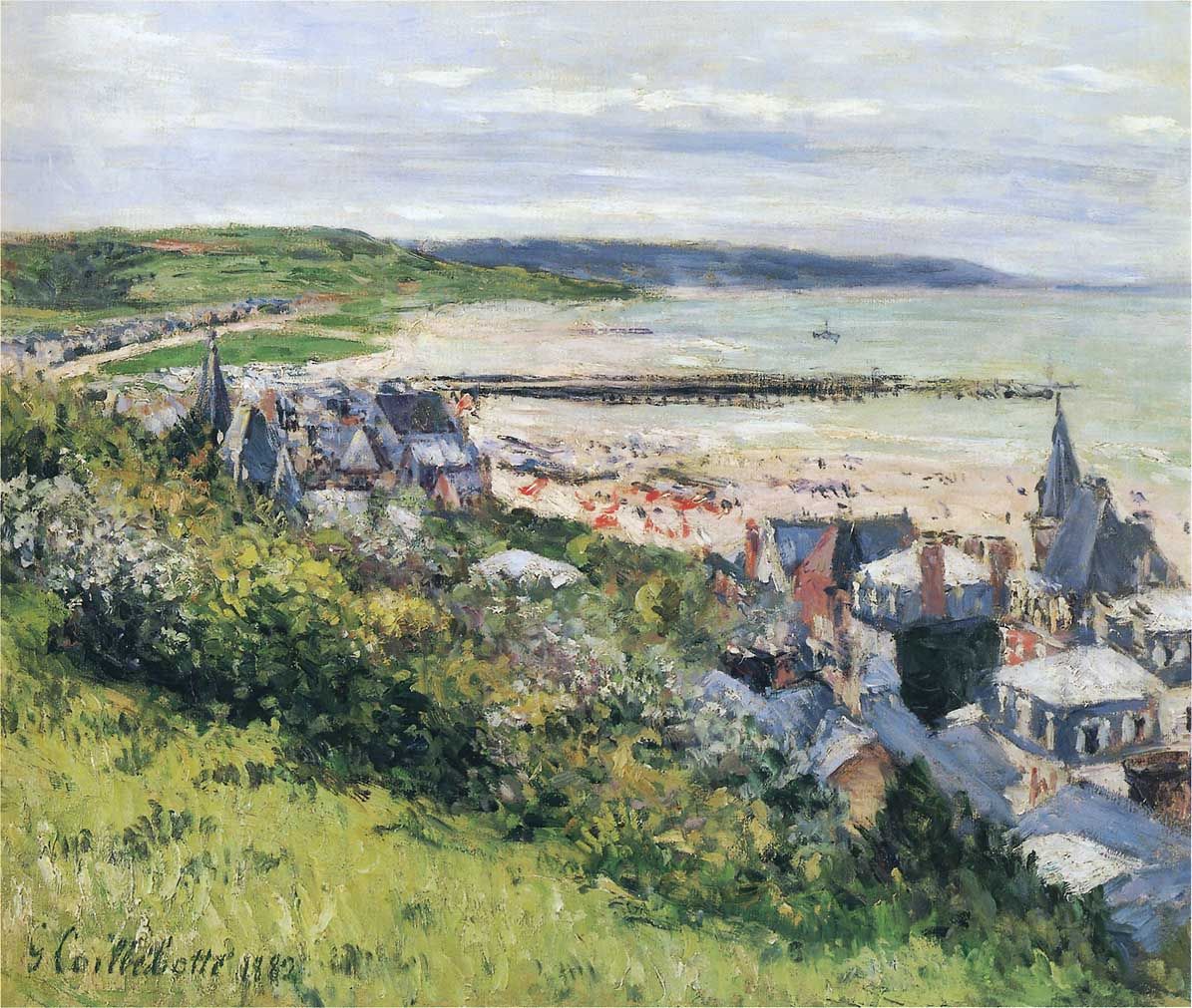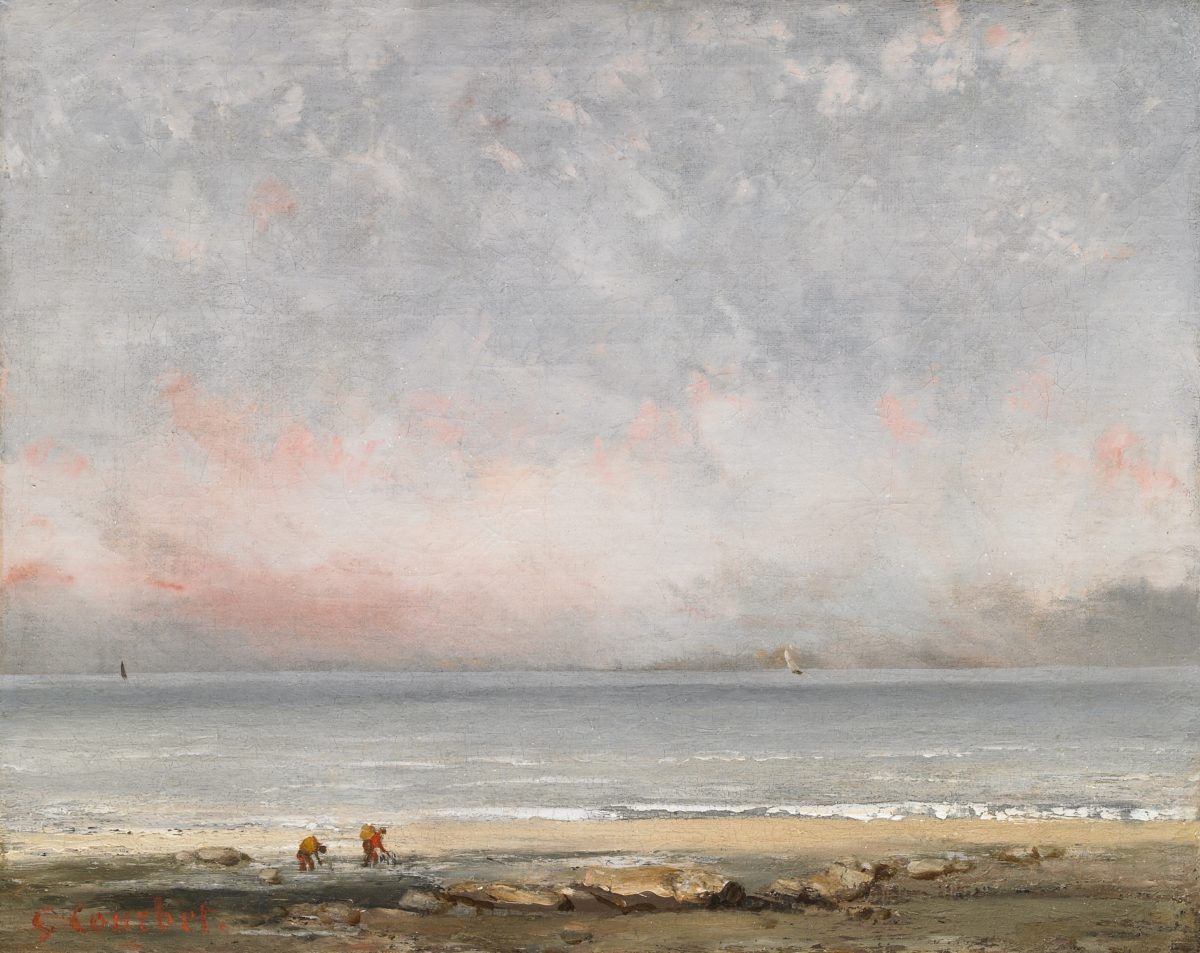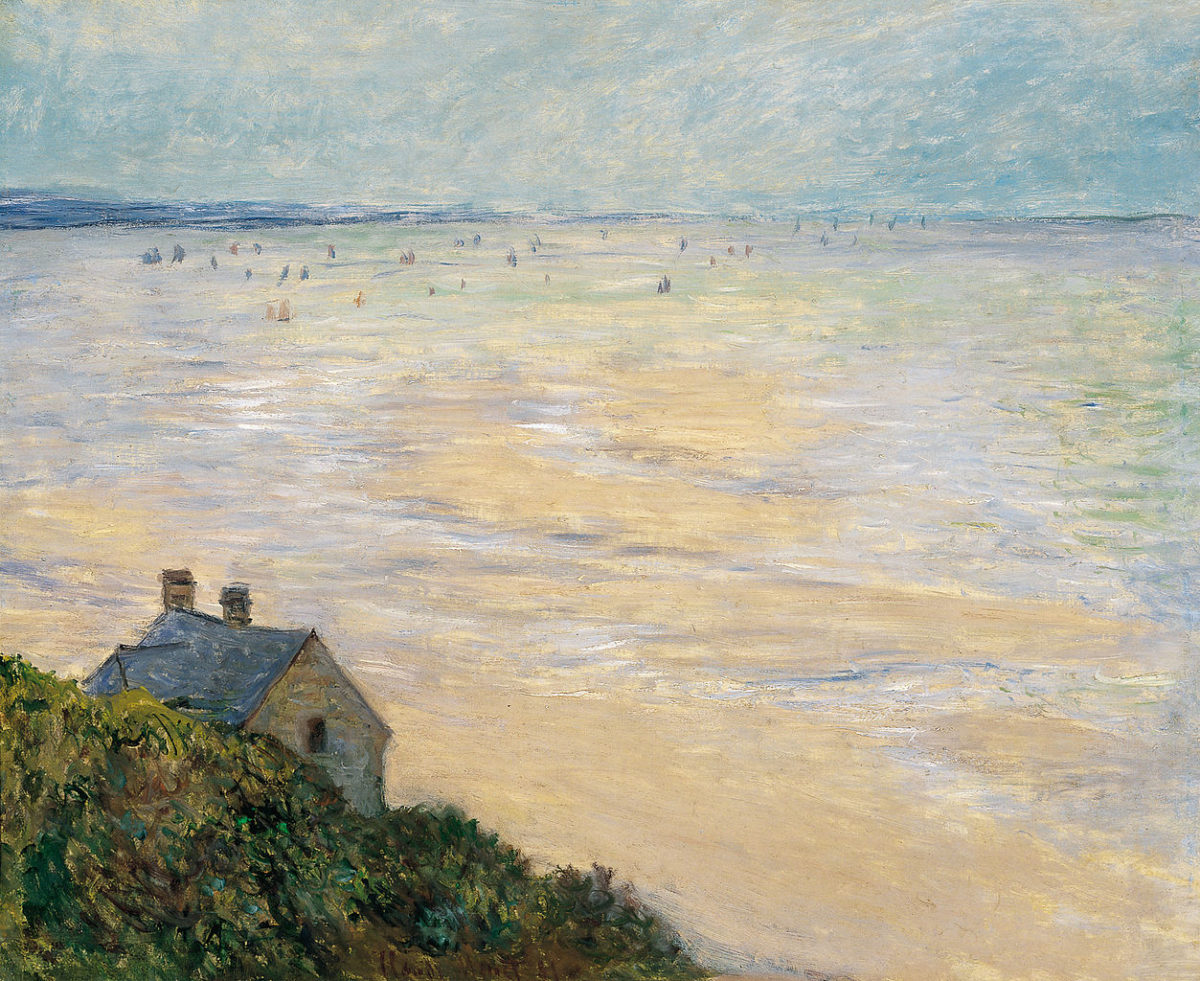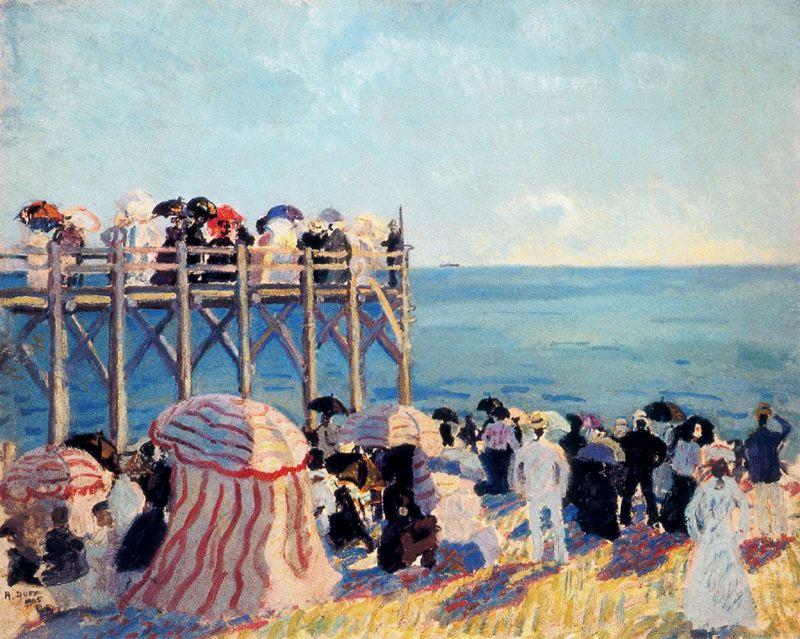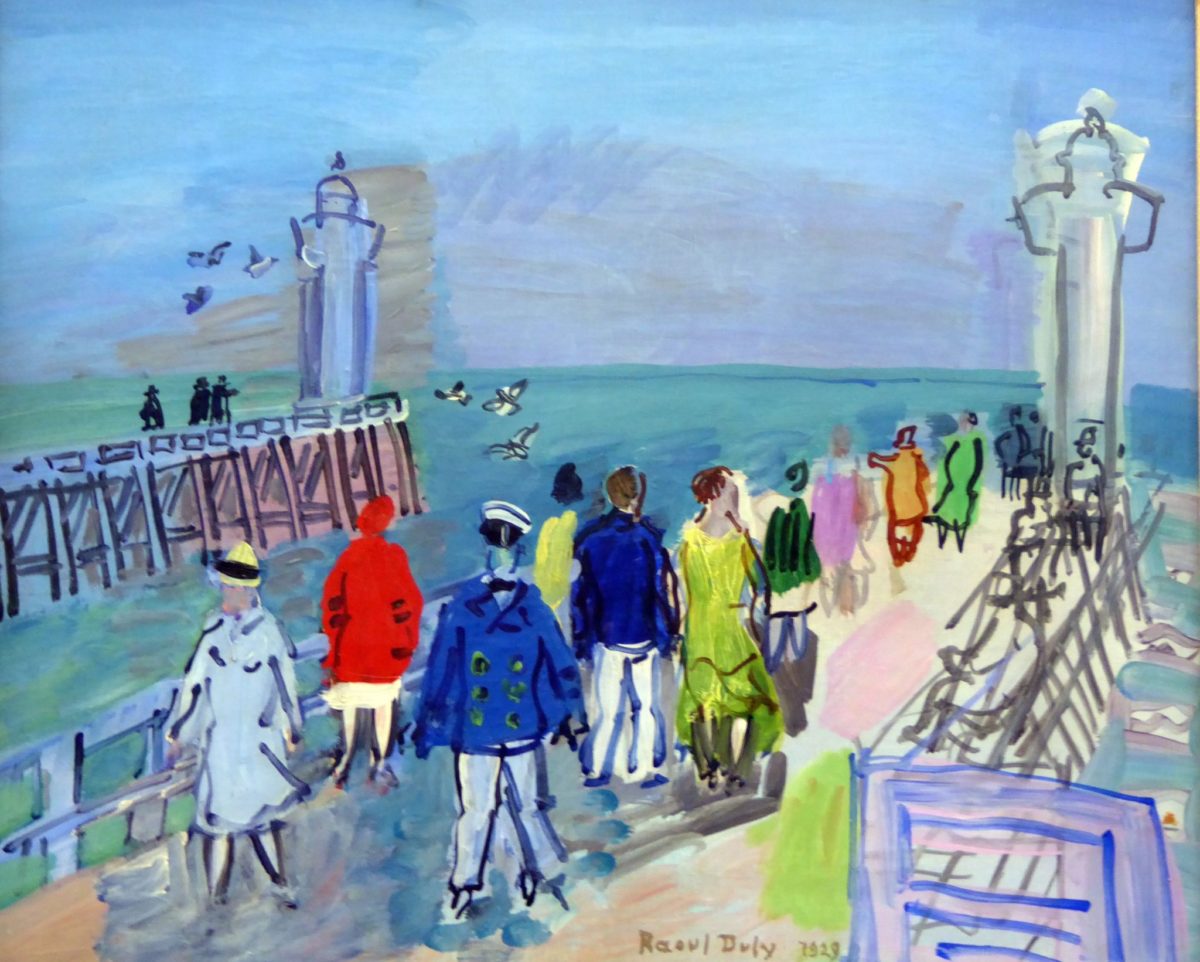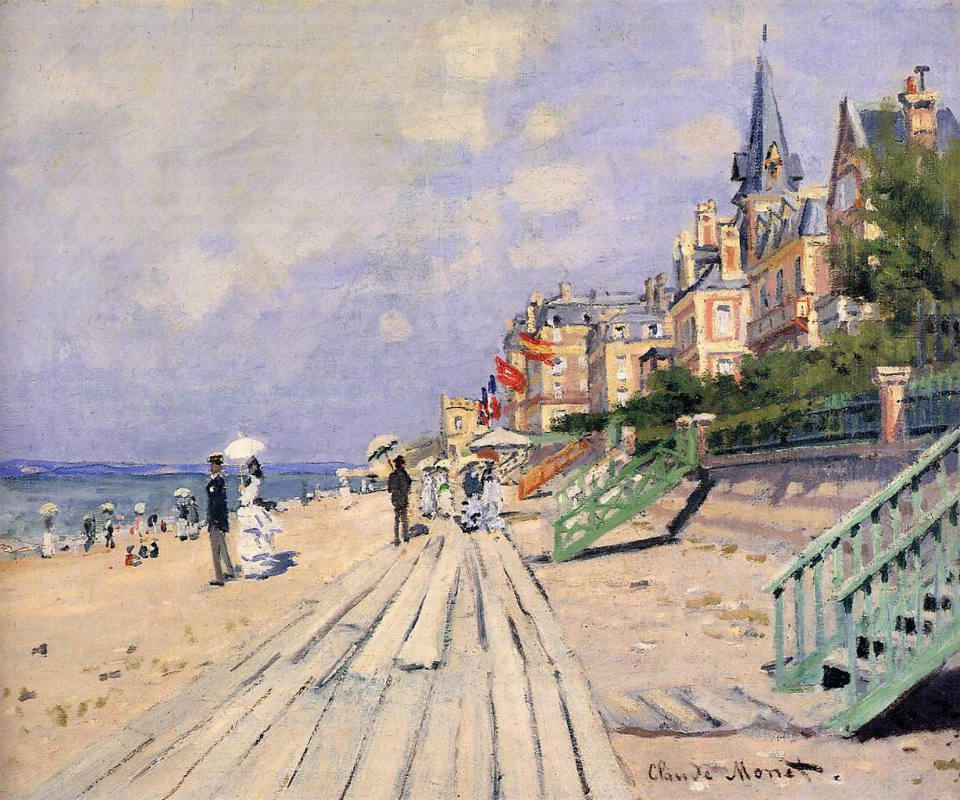Who wouldn't be seduced by the beauty of the Trouville beach and the charm of its fishing port? A painting that has become a source of inspiration for many artists.
It is Charles Mozin, a Parisian painter, who discovered Trouville in 1825 and fell in love with this small fishing village and the surrounding landscapes. He then hastens to reproduce this magnificent spectacle on canvas and then exhibits his works in Parisian salons. This is how he introduced Trouville to other artists. They in turn come to visit this little corner of paradise and subsequently make it famous.
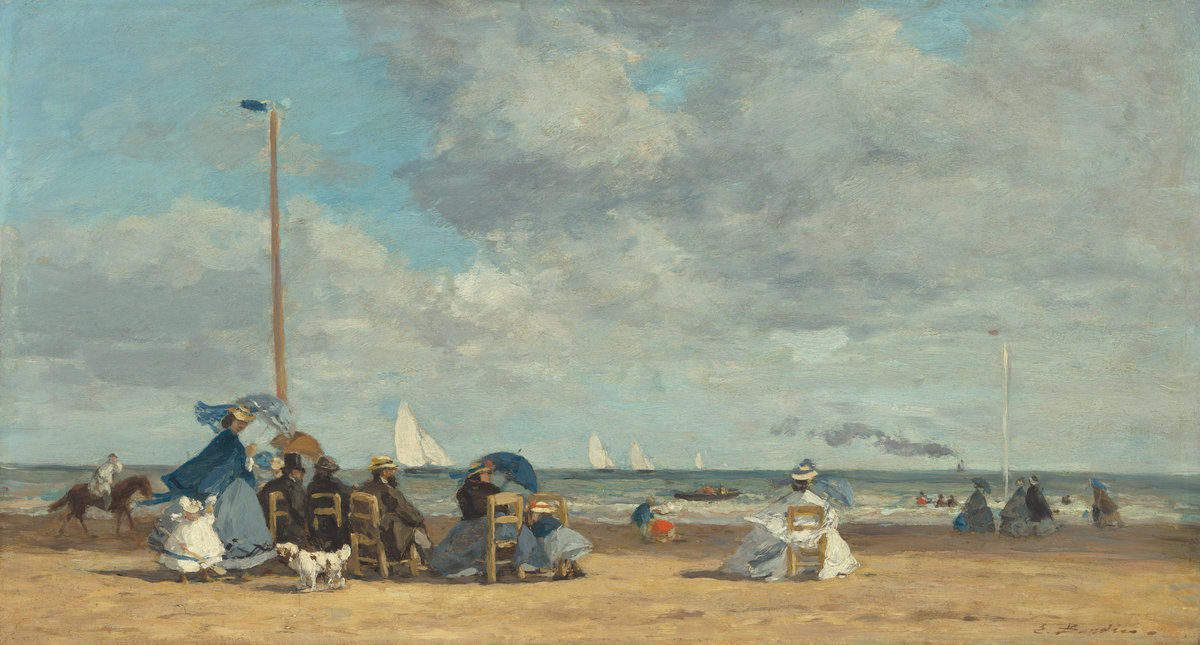
How not to fall in love?
A long beach of fine sand, pretty shades of blue, nature as far as the eye can see... It would make anyone want to stop there. The painters were greatly inspired by the sea and the large beach of Trouville-sur-Mer. But it is the charm of the entire city that operates on the artists, whether they are painters, writers or photographers.
As you walk, you too will succumb to it. Its small pedestrian streets and its half-timbered facades, its neighborhoods each more peaceful than the other... And the sound of seagulls replacing the sound of car horns! A soothing break in an increasingly hectic life, which will make you want to stay.
The poetry that emerges from this place is indescribable. As said Marguerite Duras, a writer who stayed there almost every summer for more than 30 years: “ Trouville has a very violent charm. Immediate. I don't know anyone who, from the first visit, doesn't dream of coming back. ».
Some artists attached to Trouville
These artists lived or stayed there and fell in love with it. Trouville was in their hearts and breathed a wind of freedom and inspiration into them.
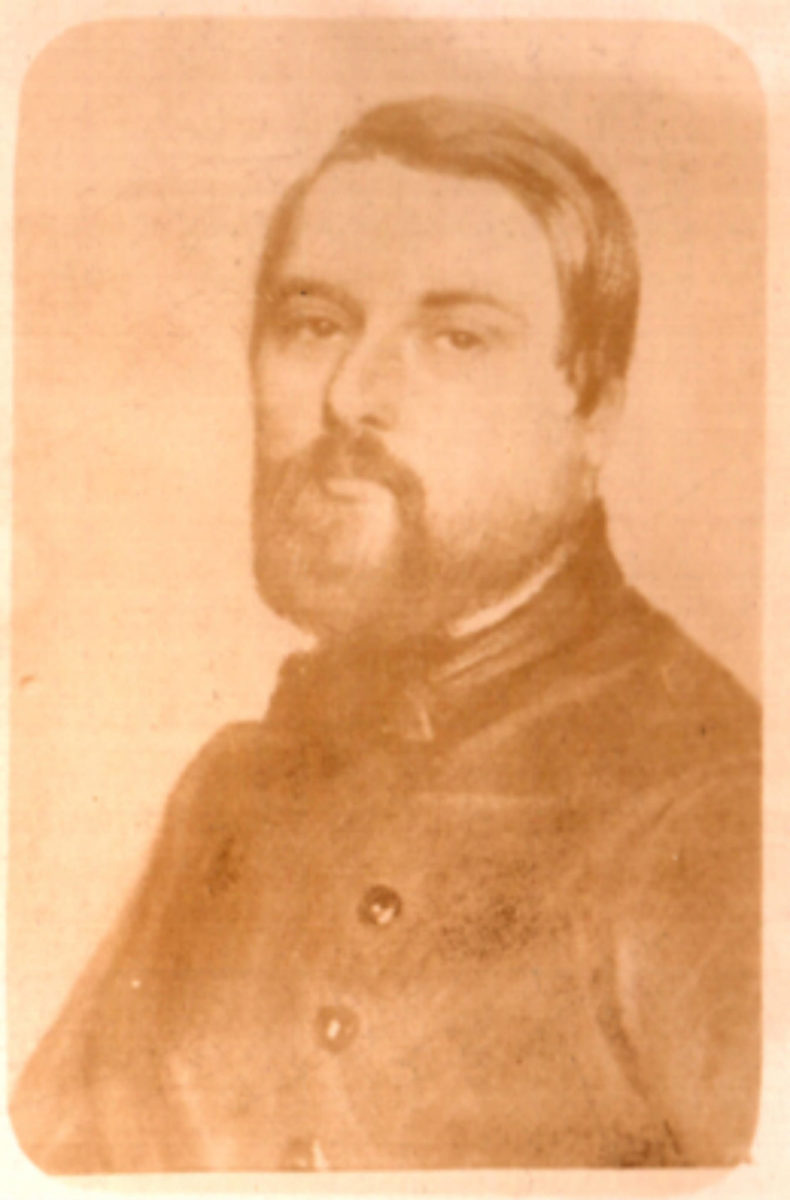
Charles Mozin
A bit like the Christopher Columbus of Trouville-sur-Mer, Charles Mozin was the first artist to discover this small fishing village and introduce other artists to it.
Parisian landscape painter and marine painter of the 1825th century, Charles Mozin discovered Trouvile in XNUMX and fell in love with this small fishing village and the landscapes that surround it. He then hastens to reproduce this magnificent spectacle on canvas and then exhibits his works in Parisian salons. This is how he introduced Trouville to other artists. They in turn come to visit this little corner of paradise and subsequently make it famous.
He arrived in Trouville in 1825, at the age of 19, and discovered a small fishing port populated by around 1 inhabitants living in the midst of marvelous landscapes. He hastens to paint these landscapes. He then exhibited his paintings in Parisian salons. Thanks to his exhibitions, he introduced Trouville to other artists, who in turn came to discover this little paradise. Charles Mozin himself did not hesitate to leave his budding Parisian notoriety to come and settle permanently in Trouville.
In 1838, he had his first chalet built, a remarkable dwelling in the form of an old manor (it was destroyed in 1909). The painter had a second one built in 1848 which still exists (it is located to the right of the municipal library). His workshop is on the first floor. He painted there on a day when the weather was bad.
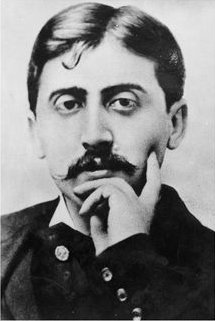
Marcel Proust
Marcel Proust's first visit to Calvados was to Trouville-sur-Mer in 1885, during a stay with his grandmother at the Hôtel des Roches Noires. Very attached to Trouville since then, the writer has returned there several times. He visits his childhood friend, Madame Straus, who has a house there, the “Clos des Mûriers”.
Invited by the uncle of his comrade Jacques Baignières, the financier Arthur Baignières and his wife Charlotte invited Proust several times to their Frémonts manor, located on the heights of Trouville. This admirably located residence would later inspire him with the La Raspelière property where many scenes from his novel take place. In search of lost time ».
Not only was the young Marcel seduced by the scale of the landscapes and the elegance of the manor, but it was during one of these stays that the painter Paul-Emile Blanche, a friend of Arthur Baignières, made him a pencil drawing which will be followed, a year later, by an oil portrait: the famous portrait with an orchid in the buttonhole, of which Proust was so proud because he appears there in the freshness of his 20 years , radiant with youth, caressing gaze, having acquired a more acute awareness of his person which belies the image of an awkward, badly put together and sulky teenager, such as in himself we surprise him on many college shots .
Falling ill, his visits became rarer from 1906 and he went to cloister in Paris in 1911 to finish his manuscript “A la recherche du temps perdu”.
He misses the Normandy coast and decides to spend a few summers in Cabourg where he stayed at the Grand Hotel, but he thinks of Trouville-sur-Mer with nostalgia. He continued to write to Madame Straus but did not return from 1913, their state of health no longer allowing it.
Their reports will therefore only be epistolary. Marcel Proust always talks about his "tense and desperate desire to come" and his "sorrow never to see these Mûriers if I don't see them this year".
Today and since 1973, Trouville-sur-Mer has an avenue Marcel Proust which leads to the house of Madame Straus.
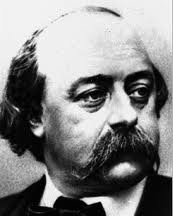
Gustave Flaubert
Norman, he was born on December 12, 1821 in Rouen. His mother being from Pont-l'Évêque, Trouville-sur-Mer was the cradle of the Flaubert family and the scene of his first romantic encounters. Every summer, the Flaubert family came to spend their holidays there. Little Flaubert adored the beach and the sea, a place that was still deserted and wild.
It was in August 1836 that he met the great love of his life in the person of Élisa Schlésinger. Gustave was walking on the beach and saw a superb black-striped red fur coat that the rising tide was soaking. He seized it and returned it to its charming owner: Élisa Schlésinger. He immediately falls madly in love with her but only confesses to her 35 years later in a love letter.
Trouville and his passion for Élisa inspired him in many novels throughout his life, including "Les Mémoires d'un Fou" and she was also one of the heroines of "Sentimental Education".
And even today, the statue of Flaubert, with its back to the port, looks in the direction of the Hôtel Bellevue and more precisely, it is said, in the direction of Élisa's room.
Gustave Flaubert returned to Trouville in the summer of 1853 when he was writing Madame Bovary and staying with a pharmacist friend, in the current central port pharmacy, on Boulevard Fernand Moureaux.
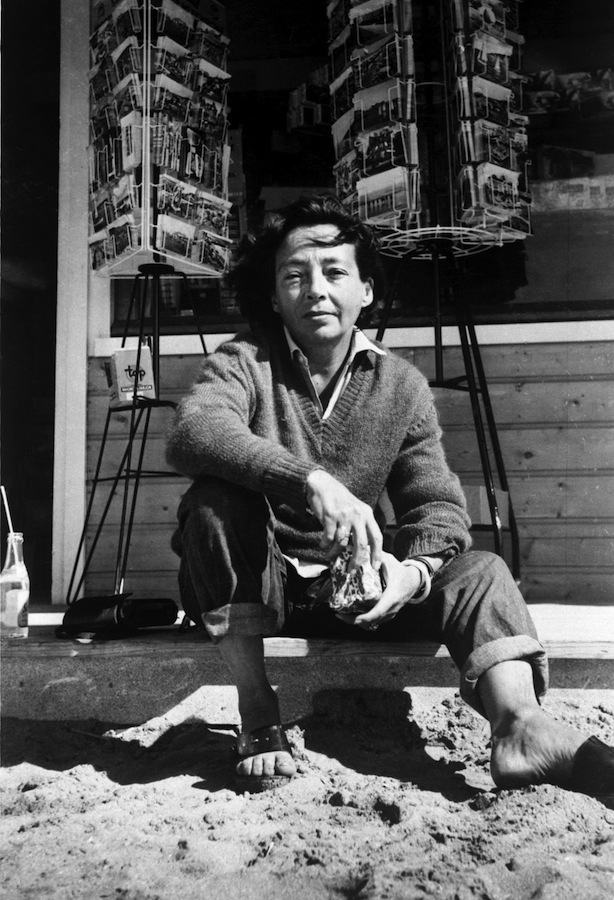
Marguerite Duras
« I would like to be called Marguerite Duras de Trouville she would say. She discovered this sea village at 17 and immediately fell in love with it. In 1963, she found an advertisement for an apartment in Roches Noires. Without hesitation, she goes to Trouville and buys it.
The place inspires her and, coming out of a difficult period, she finds there this " wonderful void conducive to writing. She is full of praise for Trouville: " Trouville has a very violent charm. Immediate. I don't know anyone who, from the first visit, doesn't dream of coming back. she would say. This small Norman town inspired several novels: "The Rapture of Lol V. Stein", "Emily L" and "Love". She also wrote many other novels there such as "L'amant", "L'Été 80", "L'Homme atlantique", "Yann Andréa Streiner"...
The stairway leading to the beach that she saw from her balcony now bears her name.
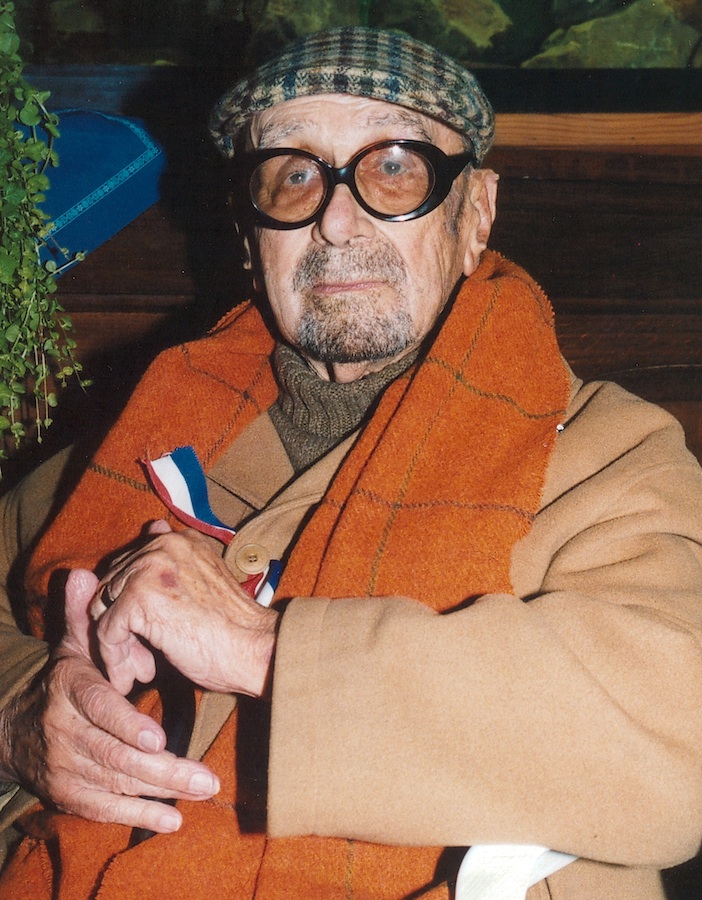
Raymond Savignac
With his wife, known by the diminutive of Mimi, the poster artist used to come and spend weekends in the station (Mimi had a few friends there). They settled there as secondary residents during the 1970s and left Paris for good in 1979.
Savignac remained discreet at first but his Parisian fame caught up with him in 1984 during the realization of 2 projects: The first for an exhibition of humorous drawings organized by the Maison des Jeunes de Trouville, and the 2nd for the exhibition of cookies. "Lu".
In 1985, for the Nuit des Funambules, he created a poster that made an impression. This is where heritage work slowly begins. And it was in 1986, thanks to his collaboration with the museum, that Savignac obtained his own exhibition. But well beyond the rooms of the Villa Montebello, it is the streets of Trouville that benefit from the talent of Savignac and are transformed into a veritable open-air museum.
It was in September 2001, in the presence of the artist, that the Promenade des Planches was renamed “Promenade Savignac” in homage to his work. Since then, his Trouville posters have been exhibited there all along.
Savignac died a year later, in 2002, and was buried in Trouville cemetery. The city pays homage to him by creating the “Sur les Pas de Savignac” circuit, a visit to discover the places where he left his mark: From the painted walls of the city to the walk on the boards.
Savignac's style creates a break with the images traditionally used to praise the resort. But we finally observe that it fits logically into the image of a city loved by artists.
Keep an eye out for the walls of this open-air museum that is Trouville, Savignac had fun on some of them!
The artistic soul still present in the city
Nearly two centuries after Charles Mozin's encounter with Trouville-sur-Mer, the presence of successive artists in the resort is still very noticeable.
Note the signs that designate the names of the streets. You will find that many are those of artists, all having a link with Trouville. For example, you will come across a rue Charles Mozin, as well as a rue Eugène Boudin… Or even an avenue Marcel Proust. Avenue leading to the former home of Madame Straus, his childhood friend whom he often visited.
Marguerite Duras gave her name to the staircase leading down to the beach below her home. And Gustave Flaubert has a statue in his likeness as well as a hotel by the sea in his name.
Omnipresent artists
Since June 2018, these names and many more have appeared on blue benches on the Savignac promenade.
So stroll alongside a Claude Monet or an Alexandre Dumas and admire the posters of the famous Savignac.
Let yourself be carried away by the sound of the waves and contemplate the magnificent seaside villas. And in one of these villas: the museum. You will find there all the wealth of art and history of the station.
The authenticity of this small fishing village which the first arrivals liked so much continues to charm new visitors. Today's painters, writers and photographers are just as seduced as their ancestors. Its rich cultural past is precious. It is spotlighted as much as possible so that these artists and the vibe they brought to the city never die.
This artistic atmosphere will follow you even in the small streets of the city. Indeed, some personalities have built or lived there and there are several art galleries.
And then open your eyes to the walls of this open-air museum that is Trouville; Savignac had fun on some of them!


